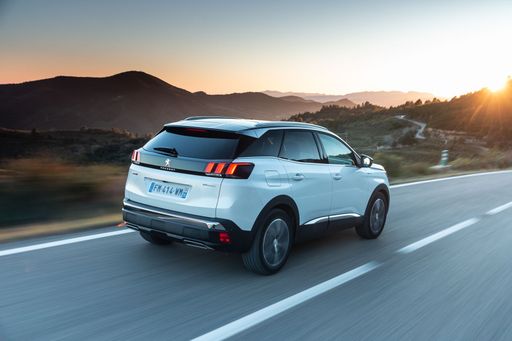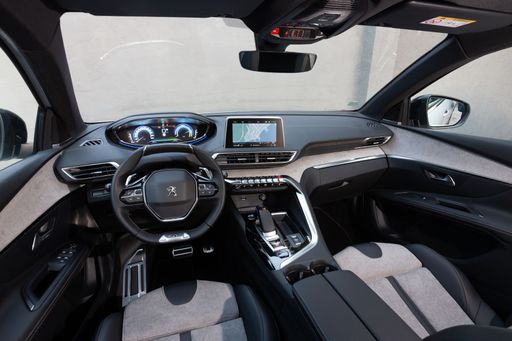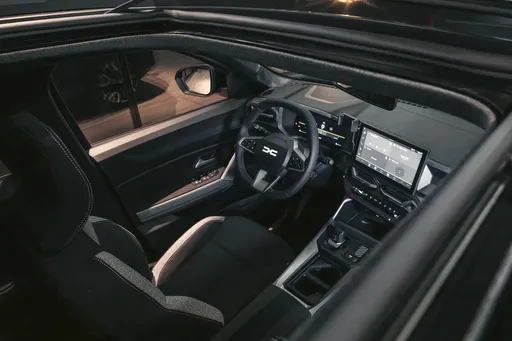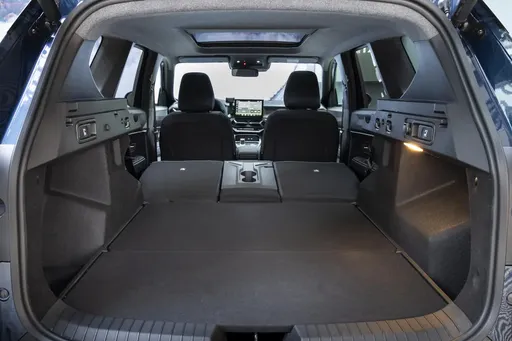The automotive market is constantly evolving, with manufacturers striving to provide vehicles that reflect both modern technology and consumer preferences. Two contenders in the SUV segment that have garnered attention are the Peugeot 3008 and the Dacia Bigster. This article aims to compare these two models based on various technical aspects and innovations, helping potential buyers make an informed decision.
Peugeot 3008 vs Dacia Bigster – Performance, range & efficiency compared
Both models have their strengths – but which one suits you more?
Compare performance, efficiency, price and space directly: Peugeot 3008 or Dacia Bigster?
Design and Dimensions
Starting with design, the Peugeot 3008 boasts a strikingly modern aesthetic with a captivating front fascia and sleek lines that enhance its aerodynamic profile. Measuring 4542 mm in length, 1895 mm in width, and standing at 1641 mm high, the 3008 offers a commanding presence on the road.
In contrast, the Dacia Bigster presents a rugged yet stylish look, appealing to those seeking a more practical SUV. Slightly longer at 4570 mm, and wider at 1813 mm, the Bigster stands taller at 1705 mm, giving it a more robust stance. Both vehicles feature five doors and provide ample space for five occupants.
Performance and Engine Options
When it comes to performance, the Peugeot 3008 presents a range of engine options, including petrol mild hybrid, plug-in hybrid, and full electric variants. The power output varies from 136 HP to a robust 231 HP, catering to various driving styles. The most powerful version can accelerate from 0 to 100 km/h in just 8.4 seconds. Moreover, it boasts impressive fuel consumption figures, achieving as low as 5.7 L/100 km.
The Dacia Bigster, on the other hand, offers a more modest performance profile with power outputs ranging from 130 HP to 155 HP. While it lacks the higher-performance options of the 3008, it remains competitive with a respectable 0-100 km/h acceleration time of about 9.7 seconds. With an even better fuel consumption of as low as 4.7 L/100 km, the Bigster leans into efficiency, making it an attractive choice for eco-conscious consumers.
Technology and Innovations
In terms of technology, the Peugeot 3008 shines with its advanced infotainment system, featuring a large touchscreen interface, smartphone connectivity, and a suite of driver-assistance technologies. The car includes features such as adaptive cruise control, lane-keeping assist, and an impressive digital cockpit that enhances the driving experience.
Meanwhile, the Dacia Bigster, building on its reputation for affordability, includes a functional infotainment system, although it may not match the sophistication of the 3008's offerings. Nevertheless, the Bigster incorporates essential connectivity features and sufficient driver-assistance systems, making it a competent entrant in the market.
Interior and Comfort
The interior of the Peugeot 3008 is renowned for its high-quality materials and ergonomic design, providing a comfortable and upscale environment for passengers. With a trunk capacity of 520 liters, it offers ample storage space, making it ideal for family outings or road trips.
Dacia Bigster impresses with its spacious interior, offering a trunk capacity of up to 667 liters. While the materials may not exude luxury as found in the 3008, the layout is practical and user-friendly, appealing to families looking for functionality over flair.
Price and Value
Pricing can heavily influence a purchase decision, and the Dacia Bigster typically offers a more budget-friendly option compared to the Peugeot 3008. While the 3008 includes a host of refinement and performance features, it also comes with a higher price tag, reflecting its position in the market as a premium SUV.
On the contrary, the Bigster focuses on providing value for money, making it a formidable option for those seeking a reliable and spacious SUV without breaking the bank.
Final Thoughts
In conclusion, the Peugeot 3008 and Dacia Bigster cater to distinct segments of the market. The 3008, with its performance, modern design, and advanced technology, is ideal for buyers seeking luxury and innovation. Conversely, the Bigster champions practicality, efficiency, and value, appealing to those who prioritize function and affordability. Ultimately, the choice between these two SUVs will depend on individual preferences and requirements in the ever-evolving automotive landscape.
Here’s where it gets real: The technical differences in detail
Costs and Efficiency:
Price and efficiency are often the first things buyers look at. Here it becomes clear which model has the long-term edge – whether at the pump, the plug, or in purchase price.
Dacia Bigster has a clearly advantage in terms of price – it starts at 20600 £, while the Peugeot 3008 costs 35100 £. That’s a price difference of around 14580 £.
Fuel consumption also shows a difference: Peugeot 3008 manages with 0.90 L and is therefore decisively more efficient than the Dacia Bigster with 4.70 L. The difference is about 3.80 L per 100 km.
Engine and Performance:
Under the bonnet, it becomes clear which model is tuned for sportiness and which one takes the lead when you hit the accelerator.
When it comes to engine power, the Peugeot 3008 has a significantly edge – offering 325 HP compared to 155 HP. That’s roughly 170 HP more horsepower.
In acceleration from 0 to 100 km/h, the Peugeot 3008 is significantly quicker – completing the sprint in 6 s, while the Dacia Bigster takes 9.70 s. That’s about 3.70 s faster.
In terms of top speed, the Peugeot 3008 performs to a small extent better – reaching 220 km/h, while the Dacia Bigster tops out at 180 km/h. The difference is around 40 km/h.
There’s also a difference in torque: Peugeot 3008 pulls convincingly stronger with 511 Nm compared to 230 Nm. That’s about 281 Nm difference.
Space and Everyday Use:
Cabin size, boot volume and payload all play a role in everyday practicality. Here, comfort and flexibility make the difference.
Both vehicles offer seating for 5 people.
In curb weight, Dacia Bigster is a bit lighter – 1425 kg compared to 1648 kg. The difference is around 223 kg.
In terms of boot space, the Dacia Bigster offers evident more room – 667 L compared to 520 L. That’s a difference of about 147 L.
In maximum load capacity, the Dacia Bigster performs evident better – up to 1937 L, which is about 457 L more than the Peugeot 3008.
Maximum payload is identical – both can carry up to 467 kg.
Who comes out on top?
Overall, the Peugeot 3008 shows itself to be leaves the rival little chance and secures the title of DriveDuel Champion.
It convinces with the more balanced overall package and proves to be the more versatile choice for everyday use.
 @ Peugeot / Stellantis Media
@ Peugeot / Stellantis Media
Peugeot 3008
Peugeot 3008
The Peugeot 3008 blends bold French styling with a surprisingly grown-up interior that makes even dull commutes feel a little bit special. Practical enough for family life yet lively to drive, it’s a clever all‑rounder that stands out from the crossover crowd without shouting for attention.
details @ Peugeot / Stellantis Media
@ Peugeot / Stellantis Media
 @ Peugeot / Stellantis Media
@ Peugeot / Stellantis Media
 @ Peugeot / Stellantis Media
@ Peugeot / Stellantis Media
 @ Peugeot / Stellantis Media
@ Peugeot / Stellantis Media
Dacia Bigster
The Bigster is poised to redefine the SUV segment with its bold design and spacious interior, catering to the needs of both families and adventure seekers alike. Emphasizing sustainability and practicality, this model reflects a modern approach to automotive engineering, making it a compelling choice for environmentally conscious drivers. With its striking presence on the road, the Bigster not only captures attention but also embodies a new era of versatile mobility.
details @ Dacia / Renault Group Media
@ Dacia / Renault Group Media
 @ Dacia / Renault Group Media
@ Dacia / Renault Group Media
 @ Dacia / Renault Group Media
@ Dacia / Renault Group Media
 @ Dacia / Renault Group Media
@ Dacia / Renault Group Media
 @ Dacia / Renault Group Media
@ Dacia / Renault Group Media
 @ Peugeot / Stellantis Media
@ Peugeot / Stellantis Media
|
 @ Dacia / Renault Group Media
@ Dacia / Renault Group Media
|
|
|
|
Costs and Consumption |
|
|---|---|
|
Price
35100 - 51400 £
|
Price
20600 - 26600 £
|
|
Consumption L/100km
0.9 - 5.4 L
|
Consumption L/100km
4.7 - 7.1 L
|
|
Consumption kWh/100km
16.9 - 17.8 kWh
|
Consumption kWh/100km
-
|
|
Electric Range
85 - 698 km
|
Electric Range
-
|
|
Battery Capacity
0.4 - 96.9 kWh
|
Battery Capacity
-
|
|
co2
0 - 121 g/km
|
co2
106 - 137 g/km
|
|
Fuel tank capacity
55 L
|
Fuel tank capacity
50 - 55 L
|
Dimensions and Body |
|
|---|---|
|
Body Type
SUV
|
Body Type
SUV
|
|
Seats
5
|
Seats
5
|
|
Doors
5
|
Doors
5
|
|
Curb weight
1648 - 2337 kg
|
Curb weight
1425 - 1547 kg
|
|
Trunk capacity
470 - 520 L
|
Trunk capacity
510 - 667 L
|
|
Length
4542 mm
|
Length
4570 mm
|
|
Width
1895 mm
|
Width
1813 mm
|
|
Height
1641 mm
|
Height
1705 mm
|
|
Max trunk capacity
1430 - 1480 L
|
Max trunk capacity
1813 - 1937 L
|
|
Payload
383 - 467 kg
|
Payload
383 - 467 kg
|
Engine and Performance |
|
|---|---|
|
Engine Type
Plugin Hybrid, Electric, Petrol MHEV
|
Engine Type
Petrol MHEV, Full Hybrid, LPG
|
|
Transmission
Automatic
|
Transmission
Manuel, Automatic
|
|
Transmission Detail
Dual-Clutch Automatic, Reduction Gearbox
|
Transmission Detail
Manual Gearbox, Automated Manual
|
|
Drive Type
Front-Wheel Drive, All-Wheel Drive
|
Drive Type
All-Wheel Drive, Front-Wheel Drive
|
|
Power HP
145 - 325 HP
|
Power HP
130 - 155 HP
|
|
Acceleration 0-100km/h
6 - 10.2 s
|
Acceleration 0-100km/h
9.7 - 11.2 s
|
|
Max Speed
170 - 220 km/h
|
Max Speed
180 km/h
|
|
Torque
230 - 511 Nm
|
Torque
230 Nm
|
|
Number of Cylinders
3 - 4
|
Number of Cylinders
3 - 4
|
|
Power kW
107 - 239 kW
|
Power kW
96 - 115 kW
|
|
Engine capacity
1199 - 1598 cm3
|
Engine capacity
1199 - 1799 cm3
|
General |
|
|---|---|
|
Model Year
2024 - 2025
|
Model Year
2025
|
|
CO2 Efficiency Class
B, A, D
|
CO2 Efficiency Class
E, D, C
|
|
Brand
Peugeot
|
Brand
Dacia
|
What drive types are available for the Peugeot 3008?
The Peugeot 3008 is offered with Front-Wheel Drive or All-Wheel Drive.
The prices and data displayed are estimates based on German list prices and may vary by country. This information is not legally binding.
